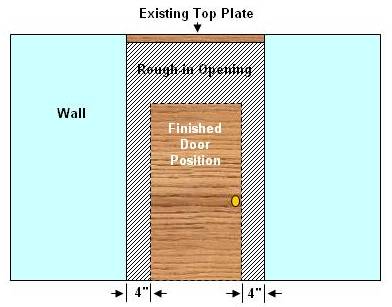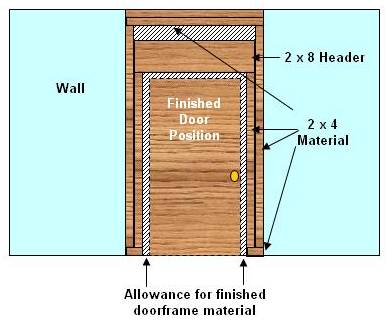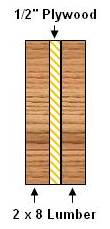Have you ever come to the conclusion that your house would be more convenient if there was a doorway in a wall that currently does not have a door? Installing a new doorway is not an overly complex home improvement project, if you take the time to plan the project.
The most complex part of the project is making sure that that the area in the wall is free of any wiring and/or plumbing pipes.
Re-routing electrical cables can usually be accomplished with some creative thought and planning. Plumbing pipes on the other hand can be very difficult to relocate without major expense.
The doorway must be properly framed in order to prevent sagging and other problems in the future. This means that the opening for the new doorway must be somewhat larger than the door you are planning on installing.
To calculate the rough-in opening for your new door you should use this calculation.
Width of door + (four 2 × 4's + 2 door jams) =
Width of door + 8 inches
The height of the opening for the doorway should be to the ceiling, leaving the top plate of the existing wall in place, but removing all of the drywall or finishing material from both sides as shown in Figure 1.

Figure 1 - Material removed from wall for new doorway
The rough-in framing of the door opening should be constructed in a manner as shown in Figure 2.

Figure 2 - Finished rough-in framing for new doorway

Figure 3 - 2 × 8 header construction for doorway
The door header should be 2 × 8 lumber sandwiching a piece of 1/2″ plywood as shown in Figure 3.
Note: Measure the thickness of the 2 × lumber that you are using. Depending on the mill and when the material was milled, the width of a 2 × 4 can vary from 3 1/2″ to 3 3/4″. Adjust the width of the header by using an appropriate thickness of plywood.
Nails used to construct the rough-in frame should be 4″, driven at an angle so that they do not exit the other side.
The same construction techniques should be used even if you are not planning on installing a door in the opening.
